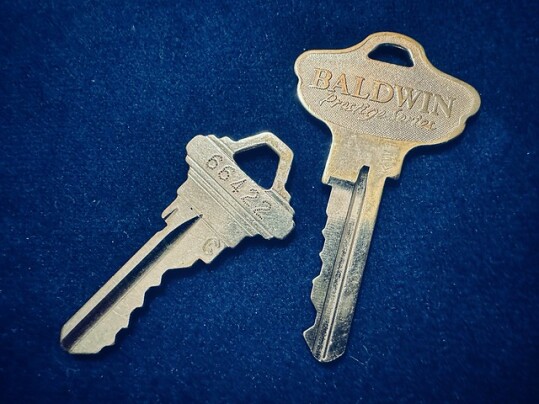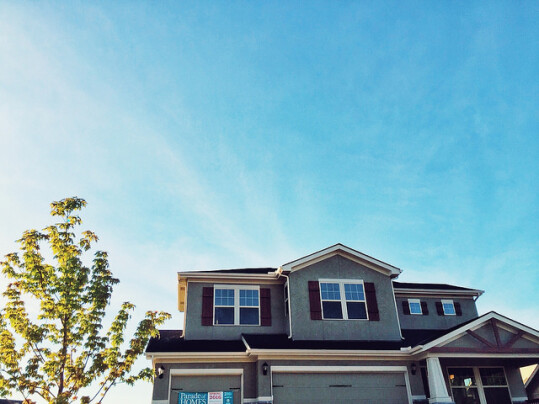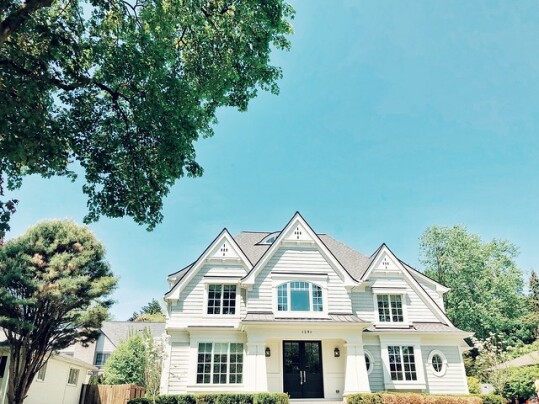The S&P Case-Shiller Home Price Indices have been tracking home price data for nearly 30 years and are considered among the leading measures of U.S. home values. The closely watched gauge looks at the top metropolitan areas in the country and compares today’s prices to where they were last year at the same time, as well as where they were last month. According to the most recent release, home prices are still significantly higher than they were last year at this time, with the national index showing a 10.6 percent year-over-year gain. However, that’s down from the 12.9 percent gain in last month’s report. Additionally, month-over-month numbers show home prices down slightly. Craig J. Lazzara, managing director at S&P, says prices continue to slow. “Prices declined in every city in September, with a median change of 1.2 percent,” Lazzara said. “Year-over-year price gains in all 20 cities were lower in September than they had been in August.” (source)
Archive for November 2022
Home Price Increases Continue To Slow
Is It Better To Be Pre-Approved or Pre-Qualified?
A new survey of home sellers found 86 percent of them preferred a buyer who’s been pre-approved for a mortgage over one who’s pre-qualified. That’s the overwhelming majority and a clear indication that home shoppers should first get pre-approved for a loan before proceeding on their house hunt. But what’s the difference anyway? Well, pre-approval requires a more thorough check of your finances than pre-qualification does. That means, you’ll be asked to provide some documentation confirming your income, assets, debts, etc. It also includes a credit check. In other words, it’s a more detailed look at your financial situation and gives home sellers confidence that you’ll be able to close on time and without issue. That’s why the overwhelming majority of those surveyed chose a pre-approved buyer over a pre-qualified one. The benefit for buyers is pro-approval gives them the ability to put in a firmer, faster offer when they find a home that fits their needs and lifestyle. (source)
New Home Buyers Bounce Back In October
Mortgage rates were at their recent peak in October. But despite elevated rates, new home buyers were active, pushing sales of newly built single-family homes higher than the month before. In fact, according to recently released numbers from the U.S. Census Bureau and the Department of Housing and Urban Development, new home sales rose 7.5 percent above September’s rate and were down just 5.8 percent from last year at the same time. The improvement beat expectations, as economists polled by Reuters predicted a month-over-month decline in October. Regionally, sales spiked in the Northeast and South, were flat in the West, and saw their only decrease in the Midwest, where they fell 34 percent. The surprising gains are encouraging, especially at a time of year when home buyers are typically less active. Also in the report, the median sales price of new houses sold in October was $493,000. The average sales price was $544,000. (source)
Mortgage Rates Fall For 2nd Straight Week
According to the Mortgage Bankers Association’s Weekly Applications Survey, average mortgage rates fell again last week. Rates for 30-year fixed-rate loans with both conforming and jumbo balances, loans backed by the Federal Housing Administration, and 15-year fixed-rate loans all declined. It was the second straight week mortgage rates fell. They are now down 50 basis points from last month’s peak. Joel Kan, MBA’s vice president and deputy chief economist, said the news was good for home buyers. “The decrease in mortgage rates should improve the purchasing power of prospective home buyers, who have been largely sidelined as mortgage rates have more than doubled in the past year,” Kan said. “As a result of the drop in mortgage rates, both purchase and refinance applications picked up slightly last week.” Overall demand for mortgage applications was up 2.2 percent from the week before. The MBA’s weekly survey has been conducted since 1990 and covers 75 percent of all retail residential mortgage applications. (source)
Do Grocery Stores Affect Home Values?
It’s nice to have a grocery store in the area. After all, you’re going to need groceries. So having a store nearby that you can quickly run to when you run out of something is a coveted convenience. But it may be more than just convenient, according to a new analysis from ATTOM Data Solutions. Their recently released 2022 Grocery Store Wars looked at home values near three popular grocery store chains to determine where values were the highest. What they found was average home values were highest in neighborhoods near Trader Joe’s. In fact, homes near Trader Joe’s had an average value of $987,923 – compared to $891,416 near Whole Foods and $321,116 near Aldi. Living near an Aldi, though, was best for home appreciation and home seller return-on-investment. Rick Sharga, ATTOM’s executive vice president of market intelligence, says it’s something for home buyers to consider. “Smart home buyers might want to consider where they’ll do their grocery shopping when they’re shopping for a new home,” Sharga said. “It turns out that being located near grocery stores isn’t only a matter of convenience for homeowners but can have a significant impact on equity and home values as well.” (source)
Housing Outlook Sees Market Rebound Ahead
Each month, Fannie Mae’s Economic and Strategic Research Group releases a forecast detailing what they believe is ahead for the housing market and economy. According to their most recent release, the group sees the current market slowdown continuing into the first half of next year. Among the reasons for this, the “lock-in effect” is a significant contributor. With rates higher than those homeowners already have locked in on their current mortgage, there is a financial disincentive to move for many homeowners right now. But while the group believes that will slow sales in the months ahead, they see things beginning to improve during the second half of 2023. “From our perspective, the good news is that demographics remain favorable for housing, so the sector appears well-positioned to help lead the economy out of what we expect will be a brief recession,” Fannie Mae’s chief economist and senior vice president, Doug Duncan, said. After dipping during the first half of next year, the ESR group expects home sales to begin to rise before rebounding significantly in 2024. (source)
Typical Home For Sale Sells In 21 Days
At the height of last year’s housing market, a good home listed for sale on a Wednesday would often be sold by the end of the weekend. Hopeful home buyers had to act fast if they hoped to get a winning offer in on a listing that garnered a lot of interest. These days, though, the housing market has slowed. But does that mean you no longer have to worry about losing an opportunity to a faster, better prepared buyer? Not really. Though buyer demand has definitely slowed, the supply of homes remains low and good homes still sell quickly. The NAR’s report found the typical home for sale was on the market just 21 days – only three days better than last year at this time. Lawrence Yun, NAR’s chief economist, says good homes continue to attract competition. “Inventory levels are still tight, which is why some homes for sale are still receiving multiple offers,” Yun said. “In October, 24 percent of homes received over the asking price.” In other words, though the market has changed, home buyers still need to be ready, especially if they’re looking for a turn-key home in a popular area. (source)







